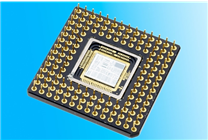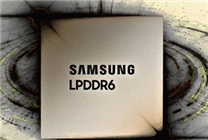Celebrating 40 Years of the Intel 80386 Processor: A Milestone in Computing History
- Historical Significance: The Intel 80386, or i386, revolutionized personal computing as the first 32-bit processor.
- Technological Leap: Introduced enhanced multitasking and virtual memory features essential for modern operating systems.
- Legacy: Key innovations of the i386 continue to influence current computing technologies, remaining relevant even 40 years later.
Intel’s 80386 processor, commonly known as the 386 or i386, marked a significant milestone this week as it celebrated its 40th anniversary. Released in October 1985, this groundbreaking chip was the third generation of Intel’s x86 architecture, following the Intel 8086 and 80286 processors. The 386 was pivotal for introducing the IA-32 instruction set, heralding a new era in personal computing.
Initially manufactured utilizing a 1-micron process, the 386 integrated 275,000 transistors within its design and boasted a maximum operating frequency of 16 MHz. Its architecture featured 32-bit general-purpose registers and a flat memory model, enabling support for up to 4GB of RAM. These specifications laid the groundwork for advancements in computing capabilities that would follow.
One of the most transformative changes was the introduction of protected mode, virtual 8086 mode, and hardware paging functions. These architectural enhancements enabled true multitasking and introduced the concept of virtual memory, allowing multiple applications to run simultaneously without interference.
During its early developmental phase, Microsoft conceptualized a demonstration program that could leverage multiple DOS sessions in a parallel manner, each with its distinct paged virtual memory. This capability soon became a cornerstone feature of the Windows 3.0 system, released in 1990, and was prominently referred to as "386 enhanced mode."
Interestingly, IBM initially resisted adopting the 386 processor, paving the way for Compaq to take the lead. The Deskpro i386, released in September 1986, was nearly a year ahead of IBM’s attempts to develop similar products. In an avant-garde collaboration, Compaq worked directly with Intel during the research and development of the 386 processor, obtaining early samples of the technology.
The Deskpro i386 commanded a steep price tag of $6,499 at launch, equivalent to more than $6,000 today. This marked a paradigm shift in the PC industry, where Intel was responsible for manufacturing the chips, while OEMs managed the production of the entire machines.
Perhaps less recognized is the fact that the creation of the Linux operating system was intrinsically linked to the 386 processor. The first Linux kernel was explicitly designed for the 386-AT hardware target platform, allowing developers to leverage the protected mode and paging functions of the i386. These features facilitated the development of Unix-like operating systems without necessitating complex compatibility layers. Remarkably, support for the 386 architecture remained part of the Linux kernel until 2012, over two decades after the processor’s initial release.
Though the 486 appeared on the scene in 1989, production of the 386 continued until 2007, showcasing its lasting impact on the technology landscape. Today, 40 years after its launch, the core designs and concepts of the 386 still underpin various technologies, including emulators, virtual machines, and legacy system environments.
In conclusion, the Intel 80386 processor stands as a monumental achievement in computer history. Its innovations not only transformed personal computing at the time of its release but continue to resonate within the fabric of modern technology, solidifying its legacy as a pivotal milestone in the evolution of computing.







